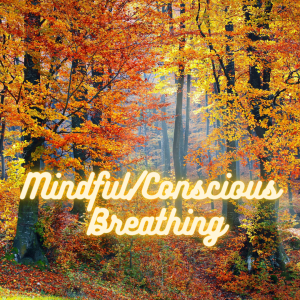 By Zainub Jada
By Zainub Jada
14:06:2022
Breathing. Easy, right? We all do it. It’s the first thing we do when entering this world and the last thing we do as we depart. For most, it is something that, as humans, we do not think about. It is a natural, innate part of our being. We have learned to go about our daily lives without thinking about what enables us to do so. We talk, walk, work, and play while breathing, without consciously thinking about doing it.
What if we did think about those inhalations and exhalations? Would that make our breath and flow of oxygen that much more efficient? If so, think about how that could impact our daily lives. Especially for those of us who may struggle with mental health, conscious and mindful breathing can make a significant difference in our overall wellness and mind space.
Life starts and stops with a breath. We survive without food for weeks and water for days, but without air, we cannot survive for more than a few minutes. By taking control of our breathing and improving how we breathe, we will oxygenate our bodies more efficiently.
Do you know that we take about 1,000 breaths each hour, up to 25,000 breaths in a single day? That’s 10-20 kg of air passing in and out of our system each day, which is ten times more than the amount of food we eat. This says a lot about how important our breathing is.
You may barely think about it, but it’s ever-present. Arguably, it’s one of the most important biological processes: It’s your breath.
Experts Trusted Source say that the average resting adult respirates — or draws breath — about 12 to 20 times per minute. That’s up to 28,800 breaths per day.
These breaths are unconscious for many, but it’s possible to harness your breath to become more aware of your body, your state of mind, and the present moment.
DEFINITION
Breathing can be done both consciously and unconsciously as well as voluntary and involuntary; it is no wonder we often get lost and forget about it. We don’t think about breathing because we are busy navigating our way through the culture in which we exist. Between the demands of our professional and personal lives, it’s easy to forget about breathing.
So, what is conscious breathing?
Simply put, conscious breathing is finding the awareness and control of our breath and making a positive impact and change in our physical and mental health. Breath is the key to health and wellness, a function we can learn to regulate and develop to improve our physical, mental, and spiritual well-being. By tuning into ourselves, and our natural patterns of inhalations and exhalations, we can make vital improvements in our overall health and well-being.
Breathing is an umbrella term for methods that direct awareness to the breath. These methods may aim to improve breathing, or the primary goal can be to build mindfulness. Human respiration is controlled consciously or unconsciously.
Conscious breathing generally describes developing a soft awareness of your breath as it moves in and out of your body. This practice can help you achieve a state of calm and presence to engage more deeply with life. Conscious breathing might also help you navigate complex thoughts, emotions, and experiences, creating the space to respond with intention and objectivity.
CONSCIOUS BREATHING BENEFITS
Your breath directly affects your nervous system. Slow, deliberate breath activates the parasympathetic nervous system. The parasympathetic nervous systems are responsible for the rest and digest function instead of the fight-flight-freeze response.
BENEFITS
- mood
- sleep
- blood pressure
- respiratory function
- metabolism and digestion
- concentration and focus
- nervous system regulation
- biochemistry, including the reduction of free radicals and waste
According to a 2020 review by Trusted Source of 18 controlled trials, conscious breathing resulted in improved circulatory and respiratory function, as well as better quality of life scores for participants with:
- bronchial asthma
- chronic obstructive pulmonary disease (COPD)
- cancer
A 2019 review noted that conscious breathing exercises had a positive effect on:
- brain activity
- nervous system and lung function
- metabolism
- body chemistry
The same review found evidence to suggest conscious breathing may offer several benefits for pre-existing health conditions, including:
- improved cardiovascular health in people with high blood pressure and irregular heartbeat
- reduced symptoms and improved lung function in people with bronchial asthma
- improvements in body weight and reduced symptoms of pulmonary tuberculosis
- enhanced mood for people quitting cigarette smoking
- reduced reaction time for children with intellectual disabilities
- better management of stress and anxiety for students
- reduced pain and improved quality of life for people with diabetes
- reduced cancer-related symptoms and increased antioxidants in people receiving radiotherapy and chemotherapy treatments
A small 2019 study examined people participating in a 5-week conscious breathing and mindfulness intervention program.
Participants experienced more improvements in symptoms of anxiety, depression, and sleep problems than those in the control group.
The study also found that pausing to take deep, calm breaths while experiencing stress seemed to have an immediate calming effect on the mind and body. These calming breaths may lead to a more mindful outlook on the stressor and how you might handle it.
CONSCIOUS BREATHING FOR KIDS
Children can benefit from conscious breathing, too. Some breathing techniques are designed to be used with children.
Star breathing can teach children to self-regulate and deal with stress and difficult emotions. Occupational therapists often use this technique with young children or children with disabilities.
Balloon breathing involves imagining a balloon in the belly and filling it up with air on the inhale, then letting it “deflate” on the exhale. Some children may also find it helpful to practice by blowing up a real balloon.
Pretzel breathing involves inhaling and crossing the arms over the chest, then exhaling and extending the arms away from the chest.
HOW TO BREATHE, MINDFULLY
There are different methods regarding mindful conscious breathing. In general, closing your eyes, inhaling deeply, pausing to hold your breath, and exhaling profoundly is the overall framework. Different techniques focus on the inhalations and exhalations happening only through the nose. At the same time, others suggest that inhalations occur through the nose and exhalations exit through the mouth. There are specific methods that focus on counting the breaths and the holds, which for some might make it easier than it may feel more tangible as the counting directs the focus. Regardless of your technique, stay mindful of what you are doing. Also, do not be afraid to experiment with different methods.
HOW TO PRACTICE CONSCIOUS BREATHING
Pay attention to your breath as it moves in and out of your body. You may want to practice elongating your breath or holding it briefly at the top of the inhale and exhaling. You can practice for 1 minute to start and then build up to 5 minutes, or even longer.
DAILY LIFE INTEGRATION
Setting aside time daily to practice is helpful. However, not making a big deal about setting aside time should make it more accessible. Even spending thirty to sixty seconds to breathe deeply is sufficient; the length does not always matter. It is the effort to do so and the mindfulness of the practice. Try setting aside a bit of time before you get out of bed or as you tuck yourself in at night. When experiencing a specifically stressful period, whether it is a conversation or activity, it can be especially helpful to find a moment either beforehand or during to pause and listen to your breath. Things should calm down. Next time you have a negative or stressful thought that enters your mind, try some of those techniques. Rather than focusing on the negative thought, try refocusing your attention on your breath. Consciously choose not to think about the thought and turn to your conscious breathing.
TIPS FOR MINDFUL BREATHING
- Find a comfortable place to sit or lay down
- Close your eyes
- Breathe from your diaphragm, not your chest. Keeping your shoulders down, use your breath to fill your torso
- Refocus negative thoughts on positive ones
- Breathe deeply and slowly; counting your breaths helps
- Place your hands on your belly and feel your diaphragm rise and fall with each breath
- If possible, practice in a quiet, dark space
CONSCIOUS BREATHING SAFETY CONSIDERATIONS
While conscious breathing is generally considered safe for most, it may not work for everyone.
If you live with obsessive-compulsive disorder (OCD), for example, it’s possible that attempts to regulate or control your breathing could become another type of compulsion or ritual. This doesn’t mean you can’t practice conscious breathing, but it may help to try it with your therapist’s support.
Simple awareness of your natural breath is typically safe. But if you have a heart condition, you may want to avoid vigorous breathing exercises without first discussing the practices with your doctor or care team.
Vigorous breathing exercises may also result in dizziness, faintness, or shortness of breath if you have low blood pressure or general sensitivities.
Always check with a healthcare professional before you begin a new breathing practice. It’s best to start with short sessions to check how your body responds. You can slowly work your way up to longer practices if you don’t experience any unwanted side effects.
HOW DO YOU STOP CONSCIOUS BREATHING?
When you complete your practice, you can go about your day. You may want to sit quietly and sense how you feel compared to the beginning of your practice.
If you have trouble stopping your conscious breathing practice, something else may happen.
Difficulty letting goes of the need to pay attention to your breath could be a sign of anxiety or OCD, especially if it causes distress. If this happens, it’s worth talking with a mental health professional before continuing your conscious breathing practice.
WHAT HAPPENS IF YOU DO CONSCIOUS BREATHING ALL THE TIME?
Practising conscious breathing throughout your day, you’ll generally find you develop a greater awareness of the present moment.
You could potentially notice enhanced sensory perception, such as a more vivid colour and smell and a greater sense of mental clarity.
However, it’s unlikely that you’ll be able to practice conscious breathing constantly. This is natural — you can pick the practice back up when you feel ready.
Can conscious breathing help with anxiety?
Yes, conscious breathing can help with anxiety. Focusing your awareness on your breath’s smooth, repetitive rhythm can help soothe your mind and nervous system.
As noted above, evidence suggests conscious breathing can ease anxiety and stress in college students, as well as anxiety, depression, and sleep issues in middle-aged adults.
Does conscious breathing make you high?
While conscious breathing may help you feel more alert, present, relaxed, and engaged in life, it won’t make you “high.”
However, in extreme cases, rapid breathing, known as hyperventilation, can lead to lightheadedness, tingling in the fingers, and even loss of consciousness. This happens due to an immediate reduction in carbon dioxide in the body.
Specific forms of advanced breathing practices may involve controlled hyperventilation. Never practise these techniques without qualified instruction and approval from a medical professional.
IN A NUTSHELL
Conscious breathing is a simple yet profound practice for getting in touch with your breath, body, and mind. It could help ease symptoms of anxiety, stress, and many mental and physical health concerns.
But beyond those benefits, the regular practice of conscious breathing can help you experience a more profound sense of presence and connection to life.
BIBLIOGRAPHY
- Wikipedia
- healthline.com
- consciousbreathing.com
- claritychi.com







0 Comments